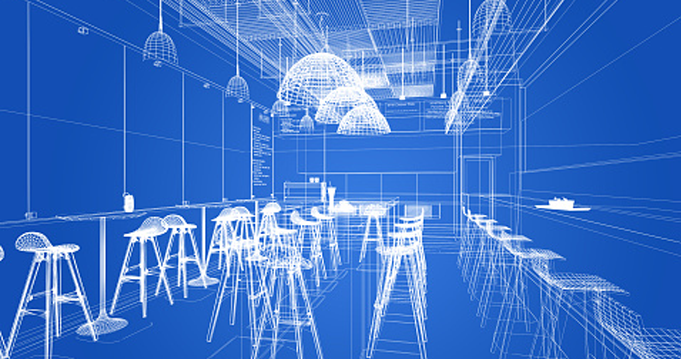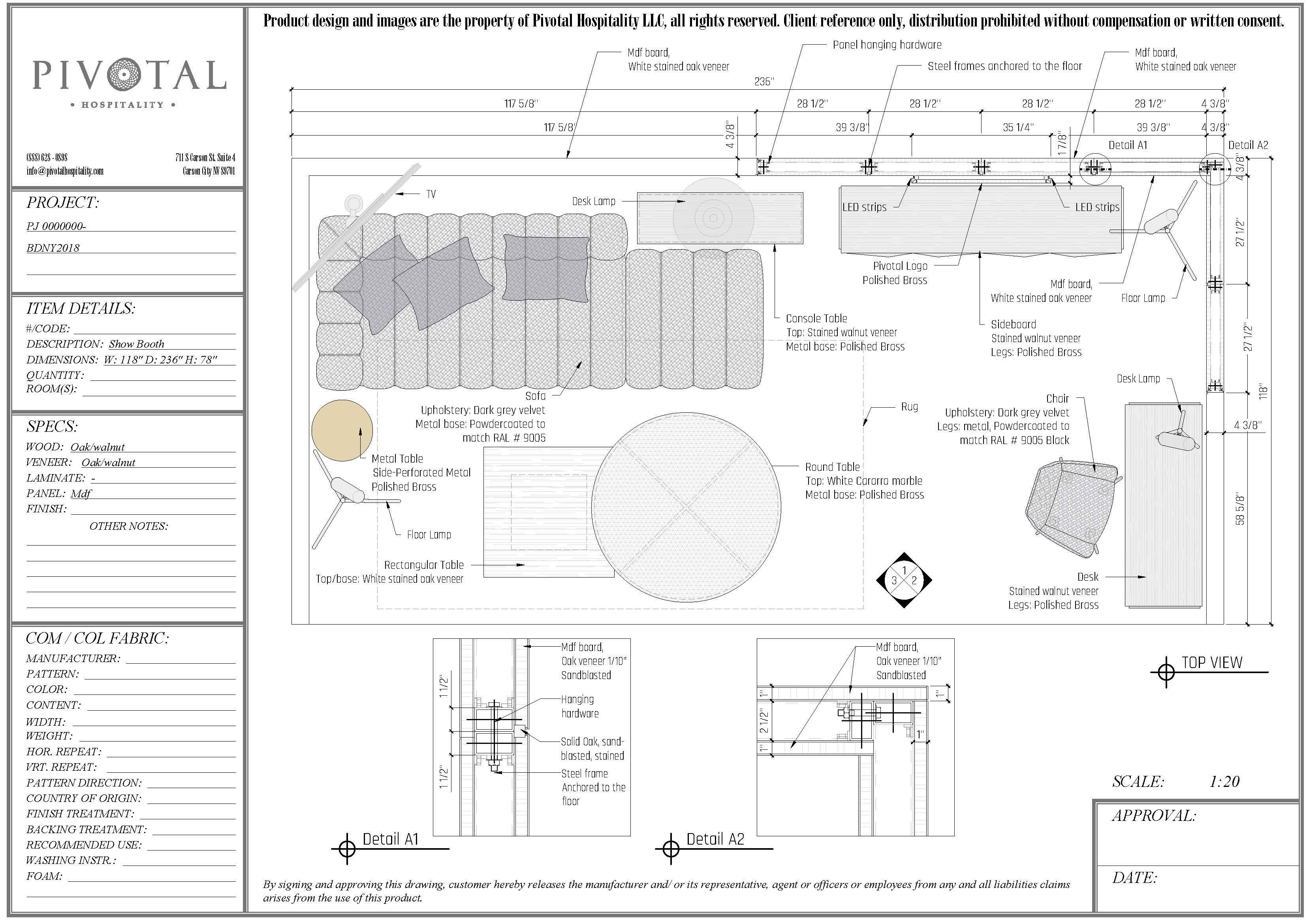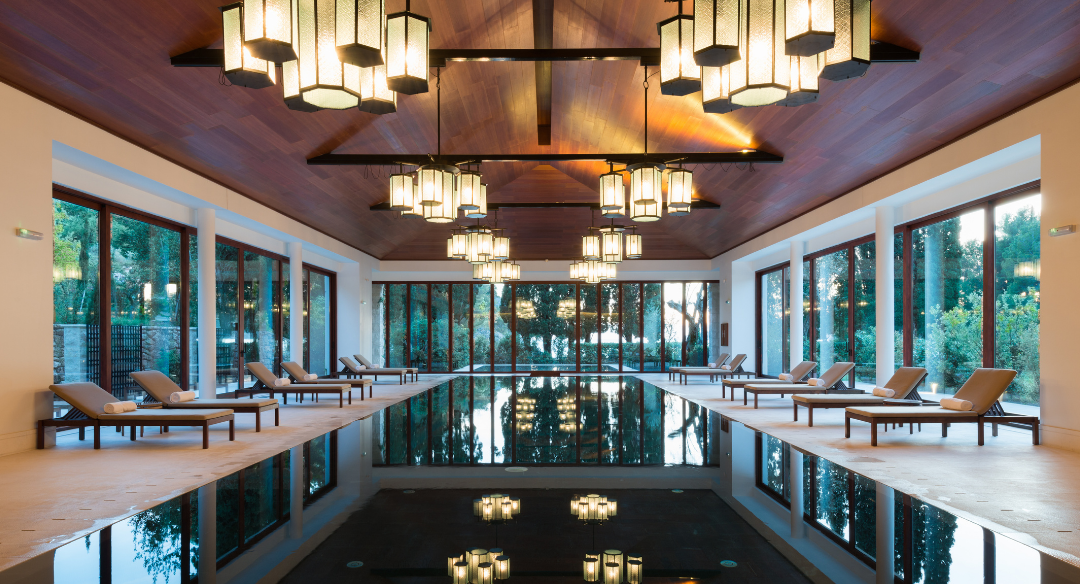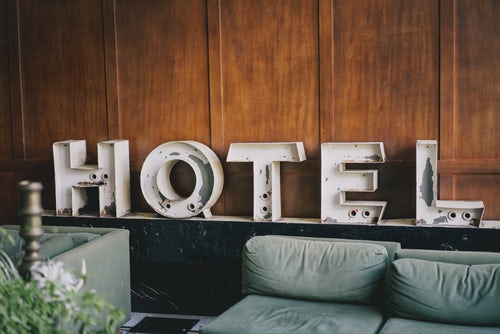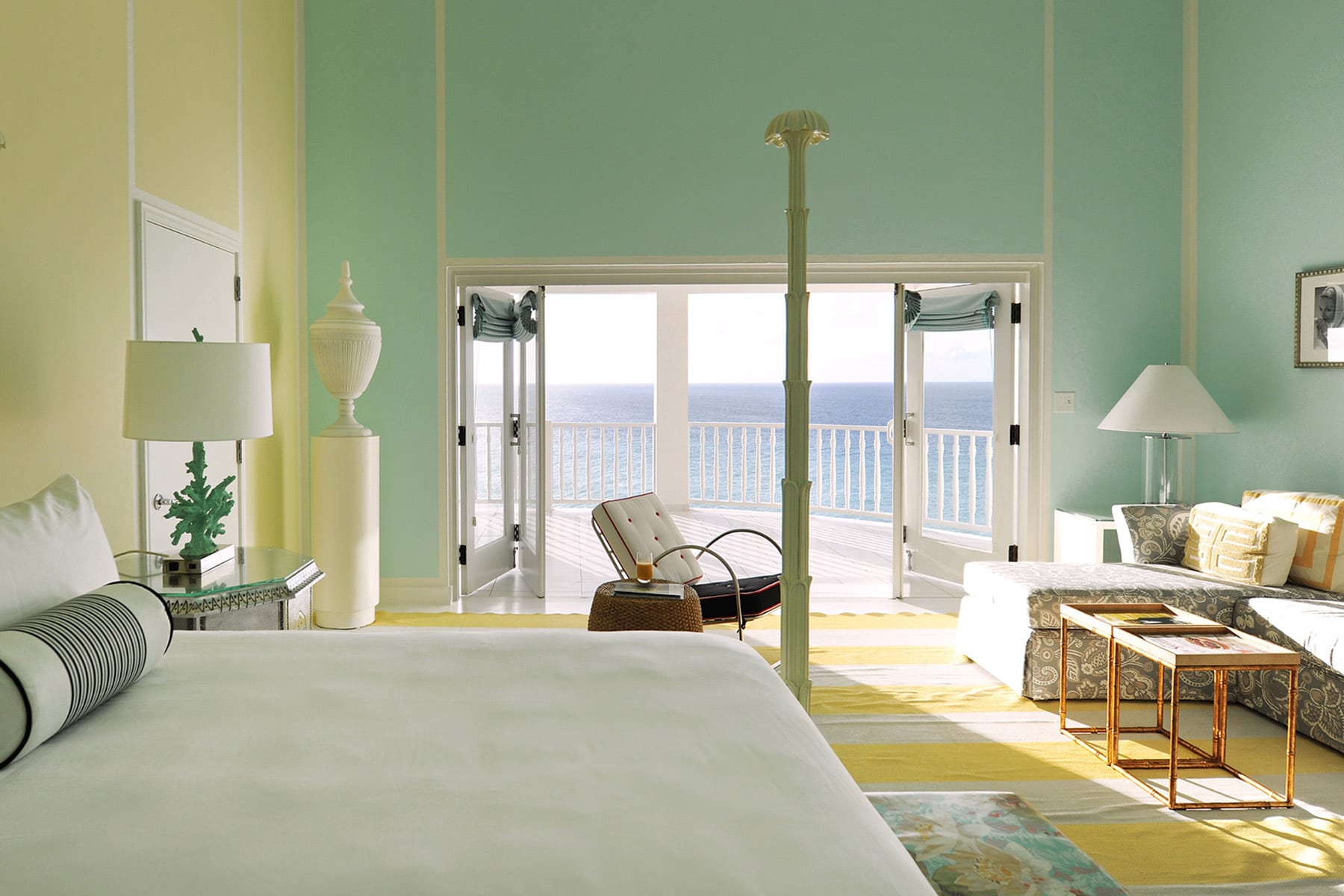Project Phases with Pivotal Hospitality
Project Phases with Pivotal Hospitality
Phase 1: Conceptualization and Ideation: The first phase of any hotel interior design project begins with brainstorming and conceptualization. Pivotal Hospitality's team will collaborate closely with clients to understand their vision, objectives, and target audience. By conducting in-depth research and analysis, they identify key design elements and themes that align with the client's brand identity.


Conclusion: Hotel interior design is a dynamic and creative field that requires expertise, attention to detail, and an understanding of the latest trends. Pivotal Hospitality will help with every aspect, from conceptualization to implementation, and offers a seamless journey for their clients. By staying abreast of emerging trends and incorporating innovative design elements, Pivotal Hospitality continues to set new benchmarks in the world of FF&E Manufacturing.
Pivotal Hospitality: Your Full-Service Manufacturing Solution for Premium FF&E Products

Pivotal Hospitality is a reputable full-service manufacturer of premium residential, commercial, and hospitality projects. With extensive experience in FF&E manufacturing, the company offers comprehensive services that meet or exceed specifications. Our capabilities include case goods, upholstered goods, fabrics, lighting, artwork, window treatments and flooring, all manufactured to specifications. Send us your inspirational designs and let the magic begin.
Whether it is a new construction or renovation project, Pivotal Hospitality can help clients with their FF&E manufacturing needs. Our team of experienced fabricators and engineers can assist in addressing any challenges that may arise during the project. Pivotal Hospitality's focus on providing exceptional services in these markets has earned us a reputation as a reliable and trustworthy partner.
Whether it's a single piece of furniture or a complete FF&E package, Pivotal Hospitality is committed to delivering exceptional quality and service. We work closely with their clients throughout the entire process, from design to installation, to ensure that every project is completed on time and within budget.
With a dedication to providing top-quality materials and skilled labor, Pivotal Hospitality also specializes in large-scale hospitality projects and special events that require the expertise of a full-service supplier. Their extensive capabilities and experience in the industry make us a valuable partner for designers and procurement companies alike.
Pivotal Hospitality values the relationships gained over the years and strives to help clients make the most out of their projects. The company's commitment to quality and customer satisfaction is beyond reproach. Only when you look good do we look good.
In conclusion, Pivotal Hospitality is a full-service manufacturer with extensive experience in premium residential, commercial, and hospitality markets. We have a proven track record of delivering exceptional services in these markets. Our team of skilled artisans can work with a variety of materials to create custom pieces that are both beautiful and practical.

Manufacturing Capabilities:
Pivotal Hospitality offers a wide range of products to help clients with their FF&E manufacturing needs, included but not limited to:
Furniture and Design
Pivotal Hospitality specializes in creating custom furniture pieces that are both functional and true to design intent. We work with clients to design and manufacture unique pieces that fit their specific needs. Our team of skilled craftsmen use high-quality materials to ensure that each piece will be appreciated for years.
Fabricated Metal and Metalworks
Pivotal Hospitality also offers fabricated metal and metalworks services. We can create custom metal pieces for furniture, lighting, and other design elements. Our team of experts has experience working with a variety of metals, including stainless steel, brass, and copper. We use state-of-the-art equipment to ensure precision and accuracy in their work.
Custom Design Elements
In addition to furniture and metalworks, Pivotal Hospitality can also create custom design elements for clients. This includes everything from decorative screens and wall panels to custom signage and art installations. Our team of product designers and fabricators work closely with our clients to create unique and personalized pieces that fit their specific needs.
Fabrics and Upholstery
Pivotal Hospitality offers a wide selection of fabrics and upholstery options for clients. We work with top-quality materials to ensure that each piece is both comfortable and durable. We offer a variety of options, including leather, vinyl, and a wide selection of fabrics. Our team of skilled upholsterers can create custom pieces that fit any design aesthetic.
Lighting
Pivotal Hospitality also offers lighting design and fabrication services. We can create custom lighting fixtures that are both functional and visually appealing. Our team of experts has experience working with a variety of materials, including glass, metal, and fabric. We use state-of-the-art technology to ensure that each piece is of the highest quality.
Artwork
Pivotal Hospitality offers a wide range of artwork options for clients. We work with a variety of artists to provide clients with unique and personalized artwork that fits their specific needs. Our team of experts can help clients select the perfect pieces for their space and can even create custom pieces if needed.
Overall, Pivotal Hospitality's capabilities in furniture and design, fabricated metal and metalworks, custom design elements, fabrics and upholstery, lighting, and artwork make us a top choice for designers and procurement company in the premium residential, commercial, and hospitality markets

Start Preparing Your 2022 Projects - Hotel Interior Design Trends
Hotel interior design trends are going to be today’s topic! Some 2021 trends are still going to be present in 2022, such as eco-friendly, however, new trends such as automatization of a room are also going to be in vogue in order to enhance the guest experience, being able to control room temperature amongst other features.
Contactless excursion: lodging visitors will find as not many physical touchpoints as conceivable to offer them the cleanest and most secure feasible stay. This will remember online look at for and check, portable keys and cloud-associated keyless inn locks, credit only installment strategies, specialized techniques like texting with the staff. The most recent patterns incorporate wellbeing and energy-saving advancements, for example, imaginative air sanitization frameworks, water channels, movement sensors, and programmed water stop.
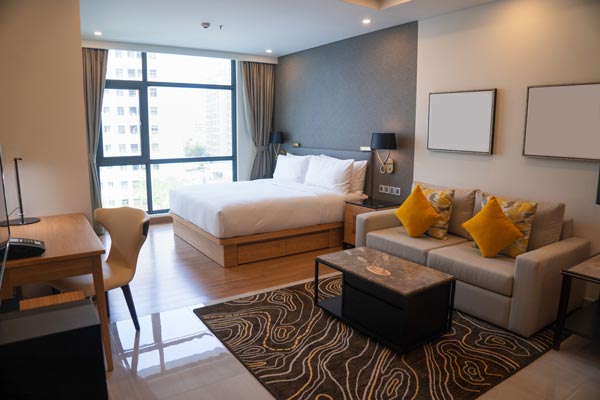
Interior Design Trends
Eco-accommodating, personalization and articulation plans are as yet going to be the go-to configuration patterns in 2022. Guaranteed items and regular materials like wood, glass, stone, or metal which satisfy environmental guidelines are the most utilized in inn remodels or even new forms. Specialists anticipate that normal upholstery and embellishing textures, unpainted wooden surfaces, stone surfaces, enormous arrangement porcelain stoneware, and earthenware production will in any case be well known in 2022. Green plants utilized in different arrangements – from the standard course of action in tubs to embellishing the dividers in the anteroom with vegetation and greenery – are called upon to restore the lodgings' insides and make the right mindset.
Another pattern we will be seeing is the remodel of normal rooms, for example, the lodging hall to make it much seriously inviting and an unwinding point. The entryways have additionally transformed into working spaces with long tables encompassed by seats, and surprisingly longer focus tables close to the holding up regions. The utilization of light and quiet shading bed for most rooms with a fly of a bonus emphasizing the dividers. Lodgings have additionally begun to select to have various styles in their visitor rooms and suites. With this, in new lodgings on a similar floor, we might observe rooms differing in style from exemplary, to current, to workmanship deco and moderation.
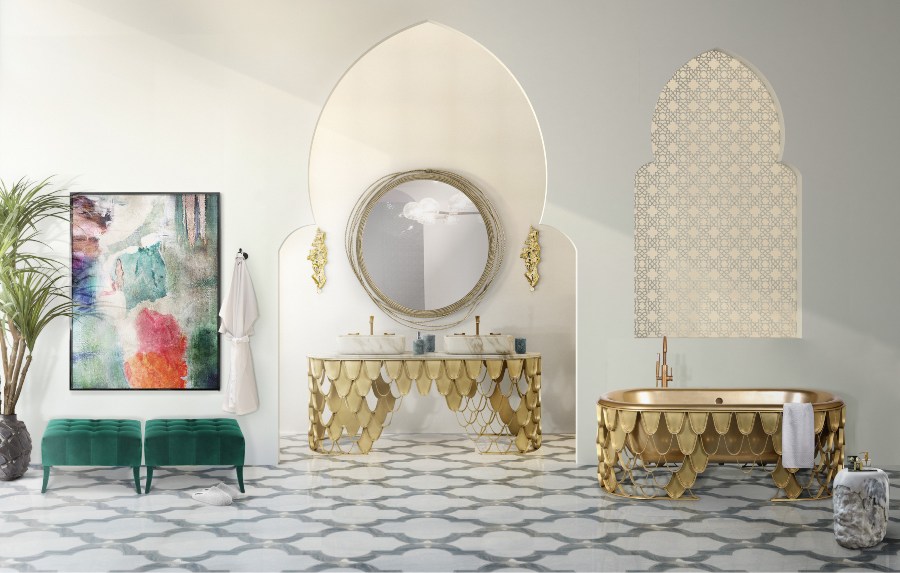
Lodging configuration has additionally experienced one more incredible impact: the worth of a home environment, with exceptional importance for business voyagers. Because of this, lodgings guarantee the greatest solace and peacefulness, with a warm shading range and expressive stylistic theme, incredibly prepared kitchens, washrooms, and lounge rooms. Another extraordinary pattern we will find is inns following nearby practices in regards to their supper decisions.
Throughout the long term, washroom configuration has become vital to our unwinding at home, so with regards to lodging restrooms, the inclination was something similar: the restroom in the inn is proposed to be viewed as a practical room as well as an unwinding region. In this way, things like the utilization of a few sorts of plumbing are stylish, for example, shower region and bath, excellent completing materials, stylistic layout things, for example, floor jars, architect lights, live plants, warmed floors, creative cooling, ventilation frameworks, and brilliant mirrors with worked in TV.
What was your take on this article on Hotel Interior Design Trends? Remain refreshed on greater accommodation news by preferring our bulletin! For more lavish inns, friendliness plan,s and best inn projects.
What is Furniture, Fixtures, and Equipment (FF&E)?
Furniture, Fixtures and Equipment (FF&E) describes property a business owns and uses in day-to-day business that is not attached to the building. It includes movable furniture and furniture that may be fixed to a wall, like a bookshelf, but that won’t damage the structure of a building if removed. It also includes any equipment such as computers used in a business.
Generally, if an item is essential to a business’s operations, and you can carry it out of a building when you leave, it’s most likely FF&E.
Common examples of FF&E are:
- Chairs
- Desks
- Tables
- Cabinets
- Partitions
- Lobby furniture
- Computers
- Electronic equipment
- Phones
- Drapery and blinds
- Decorative objects
Examples of items that are not considered FF&E are:
- Consumable products (food, drink, paper products, ink, etc.)
- Windows
- Doors
- Floors and tiles
- Wallcoverings
- Plumbing fixtures
- Built-in reception desks
- Other built-in woodwork
FF&E for specific businesses can also include things like beds for hospitals and hotels, currency counters for casinos and banks, or tools and compressors for mechanics and auto body shops.
The term FF&E is used in a variety of fields to describe different functions.
As an accounting term, FF&E items are combined on a separate line item under tangible assets on a company’s balance sheet to quantify their value. Something is “tangible” if it has a physical form, and you can touch it. Something is an asset if it has value.
In interior design, architecture, real estate, and construction, FF&E usually refers to the purchasing of furniture, fixtures, and equipment for a new business space, or the addition of items to existing business space.
What is the difference between furniture, fixtures, and equipment?
Furniture includes more substantial items such as movable office furniture. Fixtures are anything that may be secured, such as cubicle partitions or attached shelving, that have no permanent connection to the structure or building.
For example, a bookshelf might be secured to a wall to prevent it from toppling over, but its removal won’t damage the building structure. A faucet or toilet, however, would be considered a part of the building or premises itself and would not qualify as a fixture in terms of FF&E.
Equipment can refer to anything tangible a business uses for its operations such as computers, audiovisual equipment, phones, copy machines, wiring and devices, and any other industry-specific equipment.
What is FF&E purchasing?
FF&E purchasing, also known as FF&E procurement, is when a business furnishes and equips its business space. The business owner of a small business might purchase FF&E without assistance. But larger companies and public agencies tend to hire FF&E procurement agencies, interior designers, furniture dealers, or architects for FF&E selection or buying services.
Large corporations and public agencies often outsource FF&E purchasing because it’s easier and more efficient than doing it themselves. FF&E procurement companies are responsible for purchasing, delivering, and installing the correct items to a company’s specifications, and making any corrections for things that go wrong, such as faulty equipment or furniture that is substandard.
For example, a new hotel would have to buy many different types of furniture, such as beds, desks, and chairs. It would also have to purchase fixtures like lamps and curtains as well as equipment such as telephones, TVs, and safes. Rather than dealing with a bunch of different vendors for these items, it’s easier to hire a company to do it. An FF&E procurement company could coordinate purchases, delivery, and installation to coincide with the hotel’s opening schedule.
What are FF&E specifications?
FF&E specifications are thorough descriptions of each item of furniture, fixture, or piece of equipment that a business wants to purchase. Whether a company uses its purchasing department or outsources the purchasing of FF&E, it needs to describe the types of items it intends to acquire in detail.
A company might create FF&E specifications through a contractor, architect, interior designer, FF&E procurement agency, or the company’s internal purchasing department. FF&E specifications have different categories. Some common specification categories are:
- Proprietary specifications: Proprietary specifications describe a specific type of manufacturer, model number, or brand and do not allow for substitutions. Proprietary specifications are typical when a company wants to add similar or exact FF&E items to those it already has.
- Prescriptive specifications: Prescriptive specifications require a particular brand or trade name for the items.
- Performance specifications: Performance specifications describe the operational requirements or the results expected from the items, such as what functions an item must perform after being installed.
- Base bid specifications: Base bid specifications may request a specific material or product type but allow for substitutions that the purchaser believes are equal in quality, materials, design, or type.
- Descriptive specifications: Descriptive specifications describe an item in terms of materials, design, and quality but do not advise of any particular brand or trade name.
- Reference standard specifications: Reference standard specifications refer to specific materials, products, or pieces of equipment based on the requirements set by certain authorities such as state and federal standards.
How do you calculate depreciation on FF&E?
For accounting purposes, FF&E is categorized on its own line item under PP&E (property, plant & equipment) on a company’s balance sheet as long-term tangible assets or “fixed assets.” In accounting, “long-term” usually means more than one year, and FF&E assets generally have a lifespan of at least three years or more and depreciate over their lifespan.
Depreciation means a decline in the value of an asset over time. Accountants need to determine the depreciation of FF&E assets to be able to quantify their value as an expense over the period of years that make up their useful life.
Since fixed assets have long lifespans, accountants don’t want to write off the full expense of an asset in one year because an FF&E item is used to generate revenue for more than one year. Depreciation is a way to extend the value of a fixed asset over time so that a fixed asset’s expense matches the revenue it helps to generate in a given accounting period.
According to the IRS, FF&E items must meet the following requirements to be depreciable:
- The business must own them.
- The business must use them for income-producing activity.
- They must have a set useful lifespan.
- Their expected lifespan must be more than one year.
The most common method of depreciation is the straight-line depreciation method. The straight-line method deducts depreciation in equal annual amounts over the lifespan of a fixed asset.
To use the straight-line method, you would first determine the amount it costs to purchase the item (aka adjusted basis). Then you’d subtract the salvage value of the item (how much the thing is worth after its useful lifespan). The IRS states that companies should estimate the salvage value of a fixed asset based upon how long its life span is. Finally, you’d divide that figure by the number of months or years of an item’s useful lifespan.
10 growing trends > hotel interior design
Redefining THE LOBBIES
The simple coffee tables and settees no longer serve in hostel lobbies. The lobby is the first place that the guest walks into, impacting the first prints of the hostel, making it rather important. thus, hospices are fastening on creating lobby areas that aren't just straight simple spaces but an experience or a spectacle to say the least. To transfigure lobbies into focal points of the hostel, contrivers have been coming up with creative results. From hi tech lobbies giving a unique experience, to nature themed bones , setting it piecemeal in comfort, there are a lot of different ideas to go by. hospices are also adding bars, or coffee stations to the lobbies to produce a more welcoming and friendly terrain, as well as serve as an fresh socializing point.
THE RISE OF BIOPHILIA

Biophilic design is trending as is. The drive for a further eco friendly approach as well as the need for propinquity to nature, have both been motivators in the pursuit of hospices to produce biophilia friendly designs. The arrival of the covid contagion, has echoed the need for similar design as people are looking to be near to nature after being confined to their homes utmost of the time. Naturally changes have been made to accommodate the new demand.
This has meant incorporating verdure within guest apartments, in the lobbies, and indeed on the surface. Vertical auditoriums , in particular, have been a popular pick. There's also an increased focus on heartiness areas centered on nature like design to produce a comforting and comforting experience for the guests. To know more on biophilic design in hospitality, read our blog then.
TECH BOOSTED EXPERIENCE

Another trend that has been especially uproaring in the once many times, and is only anticipated to grow in the integration of technology. This has given rise to the pursuit for “ smart hospices ” or “ smart guest apartments''. As the technological surge and the IoT technology is taking over the world, it’s bound to make its way to hospices as well enabling futuristic designs. In particular, smart technology has been in demand by consumers and contrivers likewise. This is to use technology to produce centrally controlled features for a space.
From institutions to electronics, everything is tied into a single network, generally controlled by a tablet or mobile phone to make it simpler. This has allowed for a more comfortable stoner experience, appealing especially to the digital loving millennial crowd, eventually salutary for business.
WFH = WORK FROM HOTEL

Since the covid epidemic megahit, people across the globe have had to be confined to their homes. Indeed when there were no lockdowns, the work from home culture has had to continue as a palladium. In such a situation, people are experimenting with their remote work locales. A lot of people are temporarily moving to different surroundings, or just take passages as they work. Considering this new situation, hospices are accommodating to the requirements of their guests.
For some this has simply meant creating a work station within the apartments, while some have taken to developing comfortable work spaces in the lobbies, and indeed coworking spaces business centers within the demesne, for guests to use. This allows them to work ever, while enjoying a break down from their home.
RESTAURANTS RE IMAGINED

Caffs in hospices can longer be simply for mileage purposes rather than an extraordinary place in itself. Studies have noted that guests are more likely to flash back and return to places where they've had an immersive and unique terrain as opposed to a regular bone . Hotel caffs are therefore reinventing the caffs with new generalities and designs. This creates a positive and unique dining experience for the guests that they would flash back and like to return to in the future as well.
out-of-door dining especially is getting a popular pick in the reinvention as people sweat inner dining due to covid. Be it bubble dining, or themed caffs , reimagining caffs is bound to bring in a crowd, indeed if not to stay, helping boost business and give the guests a good experience.
THEMED GUEST ROOMS

Themed guest rooms are yet another interior design trend that has been improvising hotels all over. The idea is to create designs that are different from the typical white beige hotel rooms that we are familiar with. Instead designs are created with different aesthetics and themes in mind. Be it a fun tropical or a somber country life, each theme presents a different surrounding giving the guests a different experience. One theme can be used to transform a certain number of rooms or different themes can be mixed up for different rooms to give guests an array of options to choose from. Having themes creates an exquisite experience for the guests, breaking the monotony.
HOME AWAY FROM HOME

The clientele looking to take a longer break as they work remotely is increasing. People are looking for a change of scenery by moving to homestays and hotels for relatively longer breaks. In such a scenario, the hotel room has had to serve as a home away from home. Therefore rooms have had to be refurbished to be more comprehensive. This has meant inclusion of extra seating spaces such as couches or sofas, a necessary work desk and in some places even small kitchenettes fit into the rooms to give guests all they need right in their room. Some hotels have even come up with comprehensive suite-like rooms for guests sto inhabit in, as they take a break from their everyday lives.
SUSTAINABILITY AT HEART

The most important amongst the changes in hotel innards design is the more sustainable outlook. introducers and taverns likewise are looking to use structure paraphernalia that are more sustainable and eco friendly. The consumers too are more environmentally conscious than ever, which makes them favor taverns with sustainable choices and practices over conventional bones
. taverns have embraced this drive for sustainability by reinventing their styles. While some have employed renewable sources of energy like solar power to control energy consumption, multitudinous have shifted the traditional structure paraphernalia. Eco friendly and recycled paraphernalia being used to produce stunning designs that help the terrain too. Repurposed iron, brand, wood, glass amongst multitudinous others are being employed for construction. Practices analogous as proper waste operation and recycling programmes are equally proving effective and pleasing to consumers as well.
BRING THE OUTDOORS INSIDE

A running trend in hotel interior design is to combine the outdoors with the indoors. This is amplified by guests giving preference to nature embracing designs and even locations that are more enveloped in nature as opposed to in cities. Therefore,interior designers are accommodating this need. This has translated to creation of balconies, and patios alongside rooms to give a pocket to the outdoors for guests. More open designs and layouts are being embraced to make one feel comfortable and arid. Ceiling to floor glass doors, are yet another great addition to give a peek to the outdoors even when there isn't the possibility to create a separate outdoor space. This has also meant the use of more natural materials, such as wood, bamboo, cork, and metal in the interiors for a natural effect.
Concluding, here is a round up of 10 of the fastest growing trends in hotel interior design. From biophilic designs to more sustainable approaches, the hotel industry interior design is walking into a new era altogether, opening its doors to futuristic possibilities and more responsible designs.
Our Top 3 Hotel Interior Design Trends
Travelers rely on hotels to create a wonderful ambiance for their vacation travels, whether they're staying in an elite beach resort, a quaint cottage, or a luxurious pied-à-terre. While the location is important to a luxury property's success, hotel interior design plays an important role in generating atmosphere and scenic vistas for your guests.
When it comes to selecting a hotel design style, there are various variables to consider. Color psychology is used by interior designers to create palettes that provoke various emotions, while textiles and textures are chosen to complement each style. Shapes and lines contribute to the design's balance and sensitivity, while accents give it personality. Interior design is highly influenced by architecture.
Over the last decade, commercial interior design has favored classic, contemporary, and minimalist forms, yet hotel design in San Diego has its own distinct identity. California beach resorts have a distinct style with Mediterranean and coastal influences, making them attractive tourist and local destinations.
Our skilled design team has created some of the most complex hotel and restaurant interior design concepts in the industry, working on commercial properties all over the world. Any high-end property will benefit from the brightness and refinement of the following design styles.
Mediterranean Spain

To create a relaxing and exotic ambience, luxury beach resorts and spas frequently employ Spanish Mediterranean interior design. Architectural characteristics like terracotta roofs, dramatic archways, and balconies boldly display Spanish, Greek, and Italian influences in this design style. In Spanish Mediterranean-style hotels, turquoise and browns with flashes of reds and oranges are common. To achieve this aesthetic, accent pieces made of wood, leather, stone, and ceramic materials are essential.
This exotic design aesthetic is encapsulated in the La Jolla Shores Hotel, a beachside sanctuary we designed in SoCal. Warm-toned colors, arched breezeways, and Spanish-inspired designs combine to imbue the hotel with California's laid-back vibe.
This historic design style is modernized in hotels like the top La Quinta Resort & Club in Palm Springs, which you may recall from the most recent season of The Bachelorette. By preserving the Mediterranean inspirations and updating the shapes and lines, our design team developed a contemporary and streamlined aesthetic for this great commercial building.
Art Nouveau

Art Deco, which has French roots and dates from the early twentieth century, has long been a popular hotel interior design style for customers seeking traditional opulence. This design brings a touch of glamour, richness, and eye-catching symmetry to the biggest spaces with its bold colors, distinctive shapes, and opulent accessories.
This look was created in the stunning Les Oliviers luxury apartments in the Cap d'Antibes enclave on the French Riviera.
Regency Hollywood

The sumptuous residences of Hollywood's Golden Era movie stars inspired the dazzling interior design style of Hollywood Regency. High-contrast color palettes, big furniture, grand chandeliers, and plenty of mirrors are used to generate this dramatic design style.
We were entrusted with updating and improving the hotel's existing rooms and public areas while respecting the resort's original architecture and classic luxury design. Bold reds and oranges, high-gloss black tables, and boudoir upholstery give this Prohibition-era house a classic glam flair.
Hotel Interior Design Professionals
With the support of qualified experts, bring your hotel concept to life. Over the last decades, our award-winning high-end interior design team has garnered experience working on projects across the country and worldwide. Pivotal Hospitality will connect you with the ideal representative to match your needs, whether you are seeking for Mediterranean, Modern Mountain, Contemporary, Transitional, or Coastal décor style.
Meet with one of our designers one-on-one to explore how we can help you boost your hotel interior design project. This email address is being protected from spambots. You need JavaScript enabled to view it.
5 Recession Lessons Hotels in 2022
As the industry recovers by capitalizing on the revenge travel trend, it's important that hoteliers remember the lessons they learned from the recession and apply them to their business to be stronger in the future. In this article, we analyze the lessons learned over the past two years and what best practices hotels should implement in 2022 and beyond.
5 hard lessons hotels learned from the Covid 19 recession
In 2019, travel and tourism had risen to become one of the most important sectors of the global economy. At the time, the industry accounted for 10% of global GDP and employed more than 320 million people worldwide. In that year alone, 1.5 billion people booked trips abroad, according to the International Monetary Fund. The hotel industry benefited significantly from the tourism boom and was worth over $570 billion in 2019, with over 700,000 hotels and resorts and 16.4 million hotel rooms worldwide.
Below are 5 key lessons hoteliers have learned over the course of nearly two years since Covid-19 became a global economic crisis:
1. lack of data-driven distribution at the expense of revenue and profitability.
According to Phocuswright, global hotel gross bookings totaled $523.7 billion in 2019. Online sales accounted for 42% of the total, and OTAs captured two-thirds of that - about 50% for markets where hotel chains were present and up to 80% for independent hotels.
The decline in revenue at the start of 2020 forced hoteliers to take a closer look at their cost management while rethinking their distribution strategies. According to research from STR, released in February 2021, revenue per available room in the U.S. dropped 47.5% year over year to $45.48 in 2020, occupancy declined to 44%, and room rates fell 21% to $103 per night.
As a result, instead of selling discounted rooms to OTAs and incurring distribution costs of 15% to 20% of revenue, many hoteliers chose to limit distribution to the 8% to 10% it costs to sell rooms through their own websites.
2. OTAs gave hotels visibility and guests when times were good, but they did not help hotels when times got tough
At a time when hoteliers were struggling to keep their businesses afloat, both Expedia and Booking.com eliminated cancelation fees and introduced apartment-rate refunds for advance payments. While hoteliers desperately tried to negotiate with guests and encourage them to reschedule their bookings rather than cancel, the OTAs seemed intent only on serving their service users, at the expense of their hotel partners.
In response, many hotels rebelled against these practices and offered more flexible cancelation and refund policies for customers who booked directly. Hotels also communicated directly with their customers, and travelers soon realized that it was much more complicated to obtain a refund through an intermediary website than directly from the hotel.
3. the pandemic forced hoteliers to be creative in marketing their facilities and diversify their revenue sources.
The idea of generating revenue outside of rooms is by no means new or groundbreaking, but when the pandemic triggered mass cancelations worldwide, hoteliers were forced to be creative in marketing their facilities and diversifying their revenue sources.
4. With nothing to lose, hoteliers upgraded hotel technology to be flexible to changing market conditions
In good times, hoteliers were content to sell rooms and watch business flow in without rethinking the need or upgrading their technology solutions to meet guest demands. Change comes with risks, and why would anyone take the risk of investing in a new solution when the current one seems "good enough"?
However, when the Covid 19 crisis triggered constantly changing and uncertain market conditions, the recession gave hoteliers time to rethink their solutions and adapt them to the changing climate.
5. more guests turned directly to hotels, which fostered the resilience of direct sales and a stronger recovery in the upturn
The crisis triggered a significant shift in guest booking behavior. Typically, price-conscious guests book with OTAs because they expect these channels to offer the best value. However, the mass travel bans and cancelations brought to light a number of issues with OTAs in terms of refunds and customer service.
These problems came to light in a report from the U.S. Department of Transportation. From January to December 2020, OTAs received 14,604 complaints. Ninety-four percent of these complaints involved refunds for unused or lost tickets, fare adjustments, or bankruptcies.
After unsatisfactory experiences with customer service and refunds from OTAs, more and more guests were contacting hotels directly. Many hotels responded excellently by offering their guests flexible options for rescheduling bookings and letting them know what they could expect at their booked destination.
Are you looking for the hottest hotel interior design trends of 2023. ?
Welcome to Pivotal Hospitality—where we can help you renovate your hotel with the latest interior design trends of 2023!
Whether you’re looking to transform your rooms, add some new furniture, or brighten up your space with the perfect lights, we have the perfect design solution for you. The hospitality world is always evolving, and with the year 2023 comes an exciting wave of interior design trends.
Staying ahead of the curve is essential when it comes to the appearance and atmosphere of your hotel. With the help of Pivotal Hospitality, you can make sure your hotel’s interior design is modern, stylish and timeless. When it comes to furniture, 2023 is all about having a sleek and modern design. Simple, geometric shapes and clean lines are the trend of the year.
Choose pieces in natural shades such as beige, brown and grey, to create a timeless and minimalistic look. When it comes to color, 2023 is the year of bold and vibrant accents. Think bright blues, vibrant oranges, and bold yellows. These colors help to make a statement, creating a lively atmosphere for your hotel. Lighting is also an important factor when it comes to creating the perfect hotel interior. Mixing natural and artificial light is a great way to create a balanced atmosphere. Consider adding modern lighting fixtures to add a touch of glamour and sophistication. When it comes to renovating your hotel, Pivotal Hospitality is the perfect partner to make sure you create the perfect design.
Our experienced team has the expertise and experience to help you achieve the perfect interior design for your hotel. So, if you’re looking to renovate your hotel with the latest interior design trends of 2023, look no further than Pivotal Hospitality. We can help you create a modern and stylish hotel that is sure to impress your guests!
Top 5 hotel design trends for 2022
Studying the solutions proposed by designers in 2022, it should be noted that they are generally subject to current interior trends. At the same time, hotel decoration is a particular area in which an individual approach must be combined with specific hoteliers’ requirements and general principles of arrangement and decoration of this industry segment’s buildings. Today, certain trends have already clearly taken shape, five of which enjoy special authority among specialists.
Hometels: make yourself at home!
Over the past couple of years, the value of a home atmosphere has been recognized even by those who are used to being in permanent movement. This trend prompted the hospitality industry to develop a new concept – decorating a hotel room as a full-fledged home space, promising maximum comfort and serenity but not devoid of novelty. A similar effect is provided by:
The hotel room design following local traditions has also become one of the current trends. This approach allows guests to enjoy the national flavor and learn more about the city’s or country’s atmosphere in which they are located – even if they are on a business trip and do not have time for sightseeing.
Eco-trends as a win-win option
Respect for the environment and the desire to demonstrate closeness to nature is a mood that representatives of the hotel industry have also imbued. The “green” trend in design, which was born a few years ago, dictates specific rules in the design and decoration of hotels, which both hoteliers and their guests are happy to obey. The most popular solutions in 2022 promise to be:
A new perspective on the lobby
The trend towards efficient use of space and responsiveness to customer needs has led to the hotel lobby redesign as coworking spaces. So, for example, in the Ace hotel located in New York, long tables are located in the entrance area, which guests use both for work and business meetings and negotiations. The Denver Kimpton Monaco Hotel has also adopted similar solutions, and the major hotel chains Accor and Hoxton are developing their own coworking concepts.
An eclectic combination of styles to meet the guests’ expectations
The hotel rooms design based on a single template seems to become less and less relevant. Today hotels continue to fight for every guest, trying to offer them exactly what they are looking for. This approach has pushed hoteliers to design rooms in different styles.
So, in new hotels on the same floor, there may be rooms in the style of classic, modern, art deco, and minimalism. True, such a variety must be brought to a common denominator – the hotel’s so-called corporate identity. This is possible due to the use of brand colors in the design, original accessories, and logos.
Hotel as an art platform
One of the most striking trends in hotel design for 2022 proposes to bring art to the maximum in the hotel industry. Integrated art galleries in “Like” hotels, the enormous free contemporary art exhibit at the 21C Museum Hotel are just a few examples. An equally exciting concept was developed for the Nhow Hotel in Milan, in the lobby and corridors of which they regularly hold thematic exhibitions of works by artists and designers and even fashion shows and shoot clips. As a result, the interior of the common areas in the hotel is changed every few months.
Hotel bedroom/room design trends
Hotel rooms today are by no means impersonal and discreetly decorated spaces. The trends of 2022 again suggest considering them as friendly and welcoming spaces, offering the guest all conditions for a good rest and even living. A similar result is achieved using the following solutions:
Hotel bathroom design trends
In 2022, the bathroom in the hotel is proposed to be considered as a functional and relaxation area. You can provide such an atmosphere thanks to the methods and elements that are relevant today:
Hotel & Hospitality trends 2022: Conclusions
The hospitality industry in 2022 offers incredibly flexible and aesthetic solutions for hotel design. The hotels, equipped following the current trends, turn into a kind of modern oases with their own personality, the highest level of comfort, and an attractive atmosphere for the guests.


